Many gardeners think of using garden soil instead of raised bed soil in raised beds because they think they are similar. But they are not. These organic soil provide favorable ingredients to the garden, but they still have certain differences.
Garden soil usually has a heavier texture, due to which it retains more moisture. In contrast, raised bed soil is loose and well-draining, making it ideal for raised garden beds. Also, raised bed soil is specially made for raised beds and pots, allowing airflow and keeping the plant roots healthy.
In this article, I will briefly discuss garden soil and raised bed soil and help you find out which soil is more suitable for raised beds.
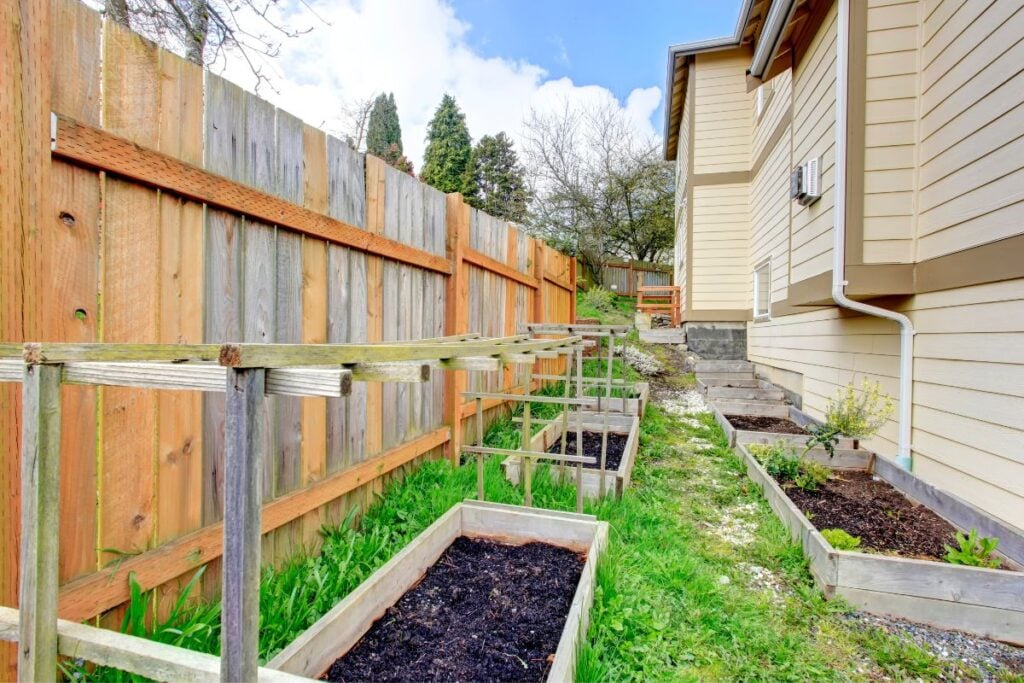
Is garden soil the same as raised bed soil?
Garden soil is very different from raised bed soil.
So if you are wondering that both types of soil have the same impact on the plants, you are wrong.
Garden soil is much heavier in texture, which helps retain more moisture.
On the other hand, raised bed soil is loose, which provides good airflow among roots and proper drainage.
Both soils have characteristics that make them suitable for specific plants.
You need to properly understand the benefits and drawbacks of both types of soil to know if they are suitable for the plant you want to grow in raised beds.
Now let us discuss each soil in detail.
Also read: 7 Best DIY Raised Bed Soil Mix: A Step-by-step Guide
Difference between the garden and raised bed soil
There are several differences between raised beds and garden soil.
Let us discuss the benefits and drawbacks of each soil to find out their differences.
Garden soil
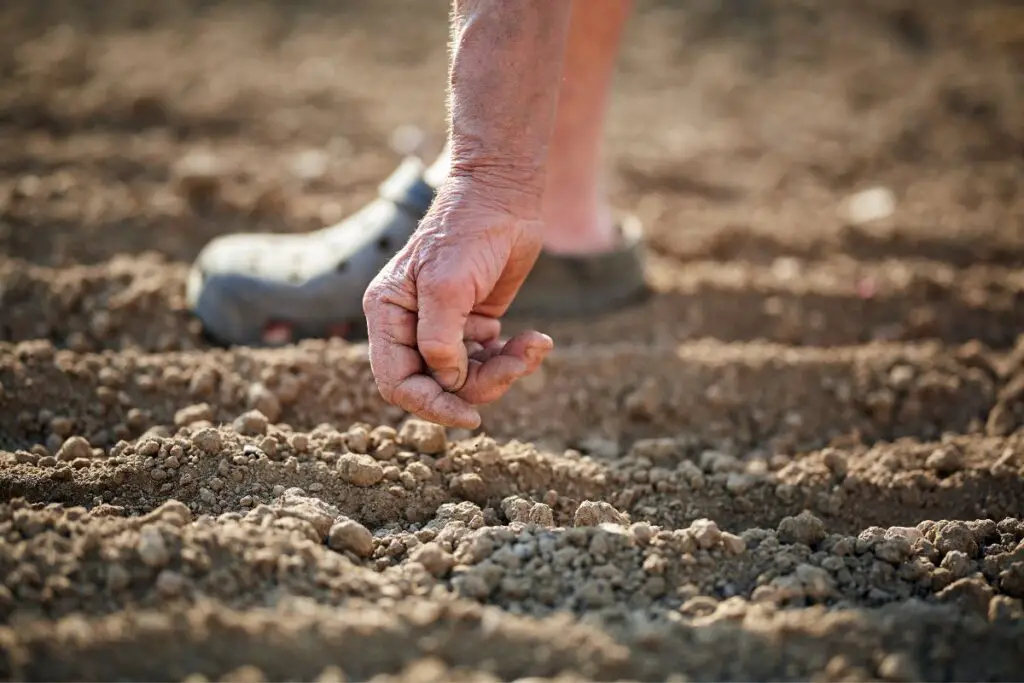
Garden soil includes topsoil and forested materials, for example, native soil, wood, and screened bark.
This soil is generally compact, so it has a good ability to absorb more water.
This property can be considered both pros and cons for the plant.
Garden soil is more suitable for in-ground gardening because the native soil compaction reduces, and the soil composition automatically improves.
This soil is unsuitable for raised beds because it can oversaturate with water frequently, leaving no extra space for the roots to develop.
Let us take a look at the benefits and drawbacks of garden soil.
Benefits of garden soil
Here are the pros of garden soil:
- Provides useful nutrients: Garden soil is rich in organic matter and micronutrients that help to establish a stronger root system and boosts plant growth. The high amount of organic matter in garden soil helps feed the plant throughout the growing season and promotes healthy growth.
- Improves compaction of existing soil: If your raised bed already contains tight and compact soil, then adding compost-rich garden soil can help improve the quality and structure of the existing soil. This establishes good airflow and moisture retention, supporting proper drainage.
- Enhance soil composition: Adding garden soil with a potting mix enhances the soil composition. Mixing them gives an accurate balance of the soil in raised beds that is neither too loose nor too dense.
- Improves pH level of the soil: The addition of garden soil also improves the pH level of the existing soil.
- Less expensive: Garden soil is generally less expensive than raised bed soil and is easily available.
Drawbacks of garden soil
Now that you know the benefits, also look at the drawbacks.
- Compact: Garden soil is usually heavy textured soil, which frequently becomes overwatered. Because of limited space and no airflow, it doesn’t let the roots breathe and grow properly.
- Soil becomes corrosive: As garden soil retains excess moisture, it contains a relatively high content of salts, and the soil becomes extremely corrosive. If the soil is covered in salt for a long time, it can cause extreme harm to the plants.
- Less humus: The composition of humus in garden soil is less than in raised bed soil due to high moisture content and less manure or compost, which becomes difficult for certain plants to grow in raised beds.
- More attracted to bugs and insects: Bugs and insects can easily get attracted in garden soil than in raised bed soil due to a damp environment that would harm the plants and vegetables.
Looking for gardening supplies? We have tested 100's of products before recommending them to you guys. Check out our best pick below:
| Image | Gardening Supplies | Best Price? |
|---|---|---|
 Top
Top Top
Top | Raised Garden Bed Kit | Check On Amazon |
 | XLUX Soil Moisture Meter, Plant Water Monitor, Soil Hygrometer Sensor for Gardening, Farming, Indoor and Outdoor Plants, No Batteries Required | No Results |
 Top
Top Top
Top | 82 Pcs Garden Tools Set and Extra Succulent Tools Set | Check On Amazon |
 | Joeys Garden Expandable Garden Hose with 8 Function Hose Nozzle, Lightweight Anti-Kink Flexible Garden Hoses, Extra Strength Fabric with Double Latex Core, (50 FT, Black) | No Results |
 Top
Top Top
Top | Dual Chamber Compost Tumbler | Check On Amazon |
 Top
Top Top
Top | Sunnyglade Plant Stakes | Check On Amazon |
 Top
Top Top
Top | Organic Cold Pressed Neem Seed Oil | Check On Amazon |
 Top
Top Top
Top | Mighty Mint Gallon :-Insect and Pest Control Peppermint Oil | Check On Amazon |
 Top
Top Top
Top | Scotts DiseaseEx Lawn Fungicide | Check On Amazon |
 Top
Top Top
Top | Jacks Classic 20-20-20 All Purpose Fertilizer | Check On Amazon |
 Top
Top Top
Top | 30,000 Seeds Pollinator Attracting Wildflower Mixture | Check On Amazon |
 Top
Top Top
Top | Survival Vegetable Seeds Garden Kit-Over 16,000 Seeds | Check On Amazon |
Raised bed soil
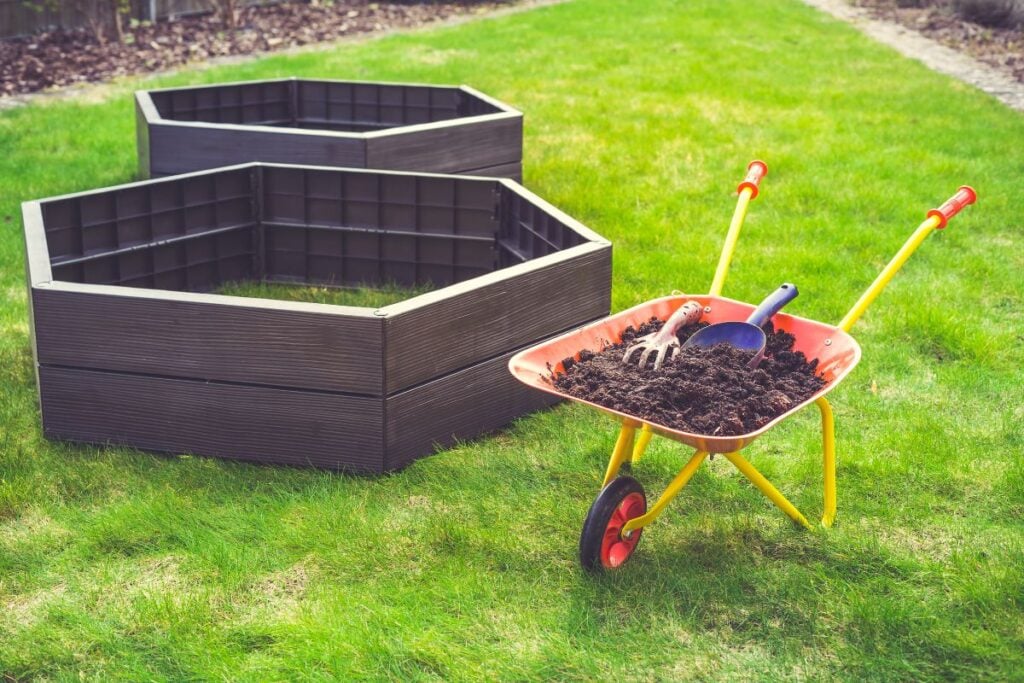
Raised bed soil is specially designed for only raised beds.
This soil is usually well-draining, loose, and rich in organic matter.
Raised-bed soil is prepared with an ideal balance between the garden and potting soil.
This soil is already a well-established loose soil that provides proper airflow and a good amount of nutrients to the root system of the plants.
Raised bed soil contains excellent drainage that gives a favorable environment to the plants and promotes faster and healthy growth.
You can use this soil for both galvanized and metal-raised beds.
Let us look at the benefits and drawbacks of raised bed soil.
Benefits of raised bed soil
Here are the pros of using raised bed soil.
- Rich in nutrients: Raised bed soil contains many organic nutrients such as kelp meal, worm castings, and poultry meal that help the plants to grow efficiently.
- Well-draining: Raised bed soils generally have a good amount of sandy soil, manure, and compost that makes them well-draining. This soil doesn’t let the water sit for long and provides proper airflow among the roots.
- Ideal pH level: Raised-based soil doesn’t require any external soil materials to maintain the soil’s pH level. This soil has a balanced pH between 5.8- 7.5, perfect for growing plants and vegetables.
- Ready-to-use soil: Raised bed soil can be used directly from the bag. Gardeners don’t have to do any amendments to get perfect soil for raised beds because it is already designed with a perfect mixture.
- Humus: Compared to garden soil, raised bed soil is more humus as this soil contains compost and manure, which makes the soil rich in organic matter and helps retain more moisture.
Drawbacks of raised bed soil
There are a few disadvantages of raised bed soil. Here they are:
- More expensive: Raised bed soil is likely more expensive than garden soil.
- Also available in poor quality: Poor quality raised bed soil is available in the market. People without knowledge of it can invest in this soil, directly affecting root growth.
- Soil dries out much quicker: As raised bed soil is mostly loose in texture, it can dry out much faster than at a normal rate. This creates problems mostly in the summer season.
Also read: How Much Soil Do I Need For A Raised Bed? (+Soil Bags Estimates)
What soil should we use in raised beds?
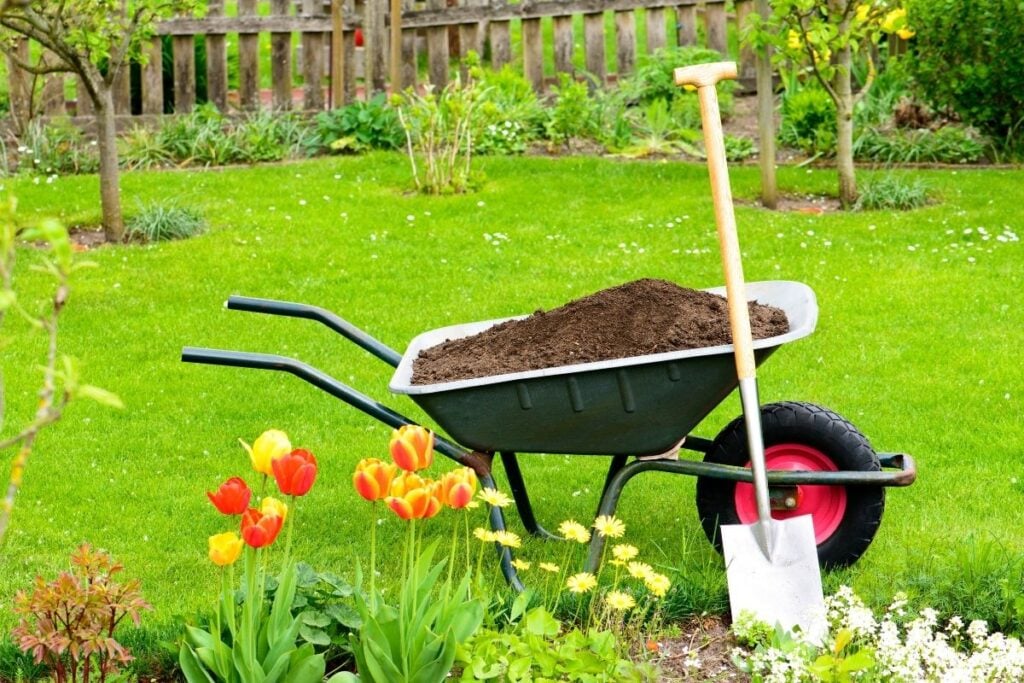
Let’s discuss different types of soil that you can use in raised beds.
Using garden soil in raised beds
You should not use garden soil directly on the raised beds as it is too dense, and your plant may not survive in such inappropriate conditions.
You can use garden soil by adding other amendments to make it ideal for raised beds.
For making a suitable soil mix for raised beds, mix garden soil with potting mix in a ratio of 5:1 along with compost to make it lighter.
This method allows you to make your own raised bed soil without purchasing from the markets.
You can combine:
- 60% of garden soil
- 10% of potting soil
- 30% compost with other parts like bark, peat, compost, perlite, or vermiculite.
This is also one of the best mixtures for raised beds.
Using raised bed soil in raised beds
Adding raised bed soil to raised beds is best, as this soil already comes with an ideal soil mixture.
Before adding the raised bed soil to the raised bed, you must make sure to amend the existing soil with compost.
As composts are rich in organic matter, they will help the soil to hold more moisture and provide nutrients to the plants.
You can add other soil amendments to raised bed soil to improve its texture.
Follow the directions on the package, and add a little bit of organic granular fertilizer to every hole in raised beds where you want to grow your plant.
After that, place the plant in each hole, cover it with the soil mix, and water the plant well.
Which soil is best for raised beds? Garden or raised bed soil?
We already know that using only garden soil is unsuitable for raised beds.
So, we can’t use it until and unless we mix it with potting soil.
However, it is best to make your own raised bed soil at home by mixing garden soil with potting soil and other ingredients.
It completely depends on the time and budget.
The best mix of garden soil for raised beds is:
| Ingredients | Percentage |
|---|---|
| Topsoil or garden soil | 60% |
| Compost | 30% |
| Potting soil (Soilless mix that contains only peat moss, vermiculite, or perlite) | 10% |
Otherwise, you can use a raised bed soil as it doesn’t require much time to amend.
| Ingredients | Percentage |
|---|---|
| Raised bed soil (Avoid poor quality products) | 75% |
| Compost | 25% |
Additional soil tips for raised beds
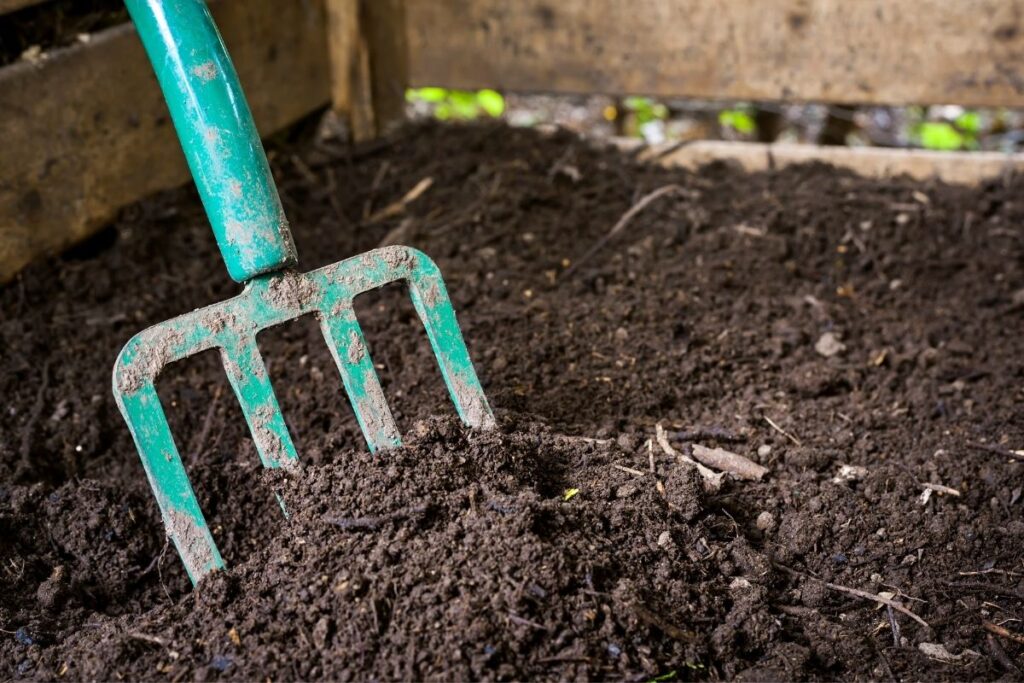
Some gardening tips are given below if you want to improve the soil texture in raised beds.
If you follow these tips, you don’t have to replace the soil yearly.
Let’s discuss:
1. Add compost to raised beds.
Adding compost to raised beds in the fall is a great way to improve the soil for the next season.
Spread a few inches of compost on the raised bed and then cover it with mulch.
Compost will help to provide nutrients in the raised bed without depleting the soil’s quality.
2. Add soil amendments
Soil amendments can be used for two things; either to increase nutrients in the soil or to change the soil texture.
If water drains too fast from the soil and dries too quickly, you can change the soil’s texture by adding compost and peat moss.
But if you want to improve the soil’s drainage, you can add loamy or sandy soil.
To improve and provide nutrients to your raised bed soil, you can add organic soil amendments like:
- Green sand
- Coir
- Grass clippings
- Lava sand
- Cornmeal
- Alfalfa meal
- Kelp meal
- Straw
3. You can use Lasagna gardening.
Lasagna gardening is normally known as no-till gardening, which is one of the great tips for improving raised beds.
Usually, the soil quality degrades with time and becomes of no use.
But adding a few layers of ingredients, such as chopped leaves, peat moss, manure, mulch, etc., can renew the entire soil from top to bottom as it breaks down.
But make sure it takes almost 6 months to break down the layer, so it is best to start early.
4. Prepare raised beds for the winter season.
To prepare the soil for winter, add a few inches of compost to the raised bed and then cover it with mulch.
Mulching will help to protect the soil from severe winter climate, and compost will add nutrients all over winter.
Final words
Those thinking of growing their plants in raised beds must know what soil is best for them. Soil plays an essential role for plants, so you must choose carefully.
Make sure not to use only garden soil in raised beds, as it can greatly impact your plant. Always amend garden soil with potting soil and then use it.
Using raised bed soil and garden soil can work fine in raised beds, so you don’t have to worry about it. You can choose either of them.
Remember that amending garden soil can be time-consuming for raised beds. Using raised bed soil would be easy for you if you don’t have that much time.
Reference: ScienceDirect, American Society of Agronomy, Noble Research Institute, Soil for Raised Beds, Raised Bed Gardening.
